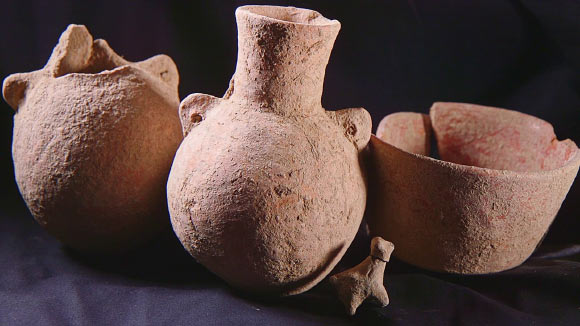Archaeologists from the Israel Antiquities Authority (IAA) have unearthed a 5,500-year-old city gate — the earliest known in Israel — and a fortification system at Tell Erani, an archaeological site on the outskirts of Kiryat Gat in the Southern District of Israel.

The 5,500-year-old gate at Tell Erani, Israel. Image credit: Yoli Schwartz, Israel Antiquities Authority.
“Tell Erani was an important early urban center in this area in the Early Bronze period,” said IAA archaeologist Dr. Yitzhak Paz.
“The site was part of a large and important settlement system in the southwestern area of the country in this period.”
“Within this system we can identify the first signs of the urbanization process, including settlement planning, social stratification, and public building.”
“The newly-uncovered gate is an important discovery that affects the dating of the beginning of the urbanization process in the country.”
The Tel Erani gate, which was preserved at a height of 1.5 m, is comprised of a passageway built of large stones that leads into the ancient city.
Two towers made of large stones flank the gate, and between them there are rows of mudbricks.
The ancient gate is attached to the city walls that were uncovered in previous excavations.

Ancient vessels found at the site of Tell Erani, Israel. Image credit: Emil Aladjem, Israel Antiquities Authority.
“This is the first time that such a large gate dating to the Early Bronze IB has been uncovered,” said Dr. Emily Bischoff, director of the excavations from the IAA.
“To construct the gate and the fortification walls, stones had to be brought from a distance, mudbricks had to be manufactured and the fortification walls had to be constructed.”
“This was not achieved by one or a few individuals,” she noted.
“The fortification system is evidence of social organization that represents the beginning of urbanization.”
“It is probable that all passers-by, traders or enemies, who wanted to enter the city had to pass through this impressive gate,” said IAA archaeologist Dr. Martin-David Pasternak.
“The gate not only defended the settlement, but also conveyed the message that one was entering an important strong settlement that was well-organized politically, socially, and economically.”
“This was the message to outsiders, possibly also to Egypt, where the process that would lead to the unification of the Lower and Upper Egypt under King Narmer was already beginning.”
“At the end of the Early Bronze Age, the Egyptians themselves arrived here and settled the tell, and they reused the gate.”







